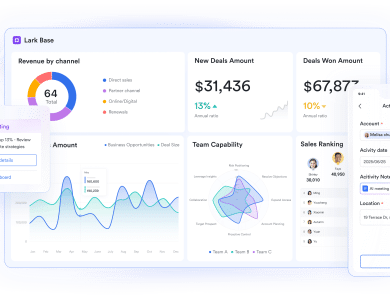What Is an Internet Data Center (IDC) and How Does It Work?

An Internet Data Center (IDC) is a facility used for housing computer systems and associated components, such as telecommunications and storage systems. It is a core element in the digital infrastructure that supports cloud computing and other web-based services. They serve as the backbone for many online services, from web hosting to cloud storage. As businesses increasingly rely on digital operations, the importance of idc data center continues to grow, making them essential in the modern IT landscape.
The Role and Functionality of an Internet Data Center
Internet Data Centers are integral to ensuring the seamless operation of various digital services that businesses and consumers depend on daily. These centers combine advanced technology with structured physical space to provide comprehensive IT support.
Key Components of an IDC
An IDC comprises various critical components, each serving a specific purpose. These components include servers, storage systems, networking equipment, power supplies, and cooling systems. Servers are the primary computing units; they handle data processing and execution of applications. Storage systems house vast amounts of data accessible on demand. Networking equipment facilitates communication between servers and other components, ensuring data flows smoothly. Power supplies and cooling systems maintain operational efficiency, preventing downtime and equipment failure.
How IDCs Support Digital Services
IDCs support a wide range of digital services by providing the necessary infrastructure for data storage, processing, and distribution. They host websites, run applications, manage email systems, and enable cloud services. IDCs offer high-performance environments that ensure data is accessible and secure, addressing the escalating demand for efficient digital services. Through their infrastructure, IDCs play a pivotal role in the digital ecosystem, optimizing performance and service delivery.
How Does an Internet Data Center Operate?
Understanding the operation of an IDC involves exploring its internal workflow, data processing/storage methods, and redundancy and backup systems.
The Workflow Inside an IDC
The workflow within an IDC begins with data input. Data from various sources is collected and transmitted to the center via high-speed networks. This data is then processed by servers, which execute applications and manage tasks as required. Communication between components within the IDC is facilitated by a robust network infrastructure that ensures data is quickly and reliably transferred between servers, storage systems, and external networks.
How Data is Processed and Stored
Data processing in an IDC involves high-performance servers that handle computing tasks, manage applications, and process information. Storage systems within the IDC are designed to store data efficiently and securely. Data is distributed across multiple storage devices using redundancy methods, ensuring data integrity and availability. IDs frequently employ advanced storage technologies like Solid State Drives (SSDs) to enhance data retrieval speeds and optimize performance.
Redundancy and Backup Systems in IDCs
To ensure high availability and reliability, IDCs implement redundancy and backup systems, which include duplicate components and systems that can take over in case of a failure. Redundant power supplies, networking equipment, and storage systems mitigate the risks associated with single points of failure. Regular data backups are created and stored both on-site and at remote locations to ensure continuity in case of data loss or corruption.
Key Benefits of Using an Internet Data Center
Internet Data Centers offer several advantages that make them appealing to businesses of all sizes.
Scalability and Flexibility in IDC Usage
One of the primary benefits of using an IDC is scalability. IDCs can quickly adapt to changing demands by scaling resources up or down as needed. This flexibility allows businesses to optimize their IT infrastructure without significant upfront investments. Whether it is handling increased traffic during peak times or expanding services to new markets, IDCs offer the resources necessary to meet dynamic business requirements.
Enhanced Security and Reliability
IDCs are designed with advanced security measures to protect against cyber threats and unauthorized access. They employ state-of-the-art hardware and software security tools, including firewalls, encryption, and intrusion detection systems. Additionally, IDCs are equipped with reliable power and cooling systems to ensure continuous operation. Redundant infrastructure and regular maintenance practices minimize downtime risks, ensuring consistent and dependable service delivery.
Cost Efficiency Compared to Traditional Data Centers
IDCs offer cost-efficiency by reducing the need for businesses to invest in and maintain their own data centers. Outsourcing IT infrastructure to an IDC allows companies to lower overhead costs and focus on their core competencies. IDCs provide a shared infrastructure, which means costs are distributed among multiple tenants, leading to overall cost reductions. Furthermore, their advanced technologies and efficient operations help in reducing energy consumption and operational expenses.

Challenges and Future Trends in Internet Data Centers
While IDCs offer numerous benefits, they are not without challenges and are subject to constant evolution.
Common Challenges Faced by IDCs
One of the significant challenges IDCs face today is achieving carbon neutrality. As energy-intensive operations, IDCs contribute to carbon emissions. Thus, there is a growing demand to explore green and low-carbon technologies for sustainable operations. Data security remains another critical concern, necessitating robust measures to safeguard sensitive data. The increasing complexity of IDC operations also presents challenges in terms of operations and maintenance, requiring sophisticated solutions for simplification.
Future Trends in the Evolution of IDCs
Looking ahead, trends indicate a shift towards more sustainable and efficient IDCs. This includes the adoption of green energy sources and innovative cooling and power management solutions. The integration of artificial intelligence in IDC operations is expected to advance autonomous and optimized operational management. High-density facility deployment will continue to rise, enabling more efficient use of physical space. Lastly, the evolution of cloud-based services will drive further complexity and demand for highly flexible and resilient IDC solutions.
Conclusion
Internet Data Centers are fundamental to the functioning of modern digital services, providing the necessary infrastructure for data storage, processing, and distribution. Their role in supporting scalable, secure, and cost-efficient digital solutions cannot be overstated. While challenges such as the need for carbon neutrality and data security persist, advancements in technology and innovative practices are paving the way for more efficient and sustainable IDCs. As the digital landscape continues to evolve, so too will the importance and complexity of Internet Data Centers.




